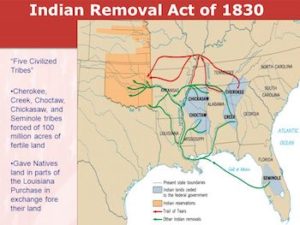
On this date, in 1830, "The Indian Removal Act" was signed into law. This was U. S. legislation enacted, leading to the white-American term “Trail of Tears” and included many Black slaves. This seizing of indigenous land forced the relocation of Native Americans. Others have sometimes referred to the government act as a "Death March," particularly concerning the Cherokee's march across the Midwest in 1838, which occurred along a land route.
President Andrew Jackson signed "The Indian Removal Act," a bill that forced the Cherokees, Creeks, Chickasaws, Choctaws, Seminole, and Ponca nations off their land in the southeastern United States. The intersectionality of African Americans and Native Americans is shown in this episode. It is estimated that one-third of the members of these tribes involved in this removal and the ensuing trek to Oklahoma were of African descent.
As an adjunct to this policy, the state of Georgia pressured the government to enforce a similar 1802 agreement as compensation for its cession of the western territory of the United States. The U.S. Army reported that 512 Blacks lived in the Choctaw Nation.
African American and Native American History
Princeton Public Library
65 Witherspoon Street
Princeton, NJ 08542
609-924-9529